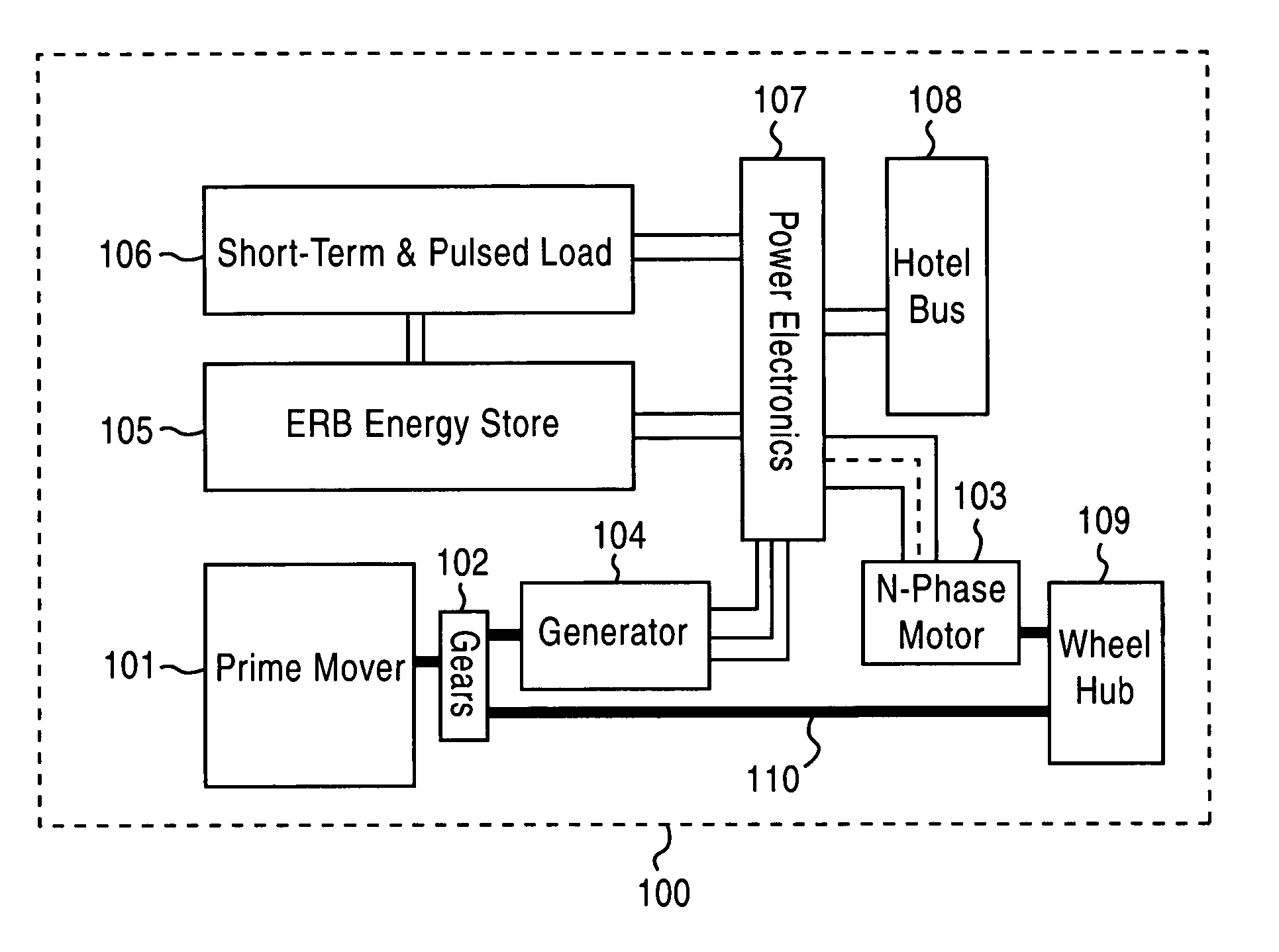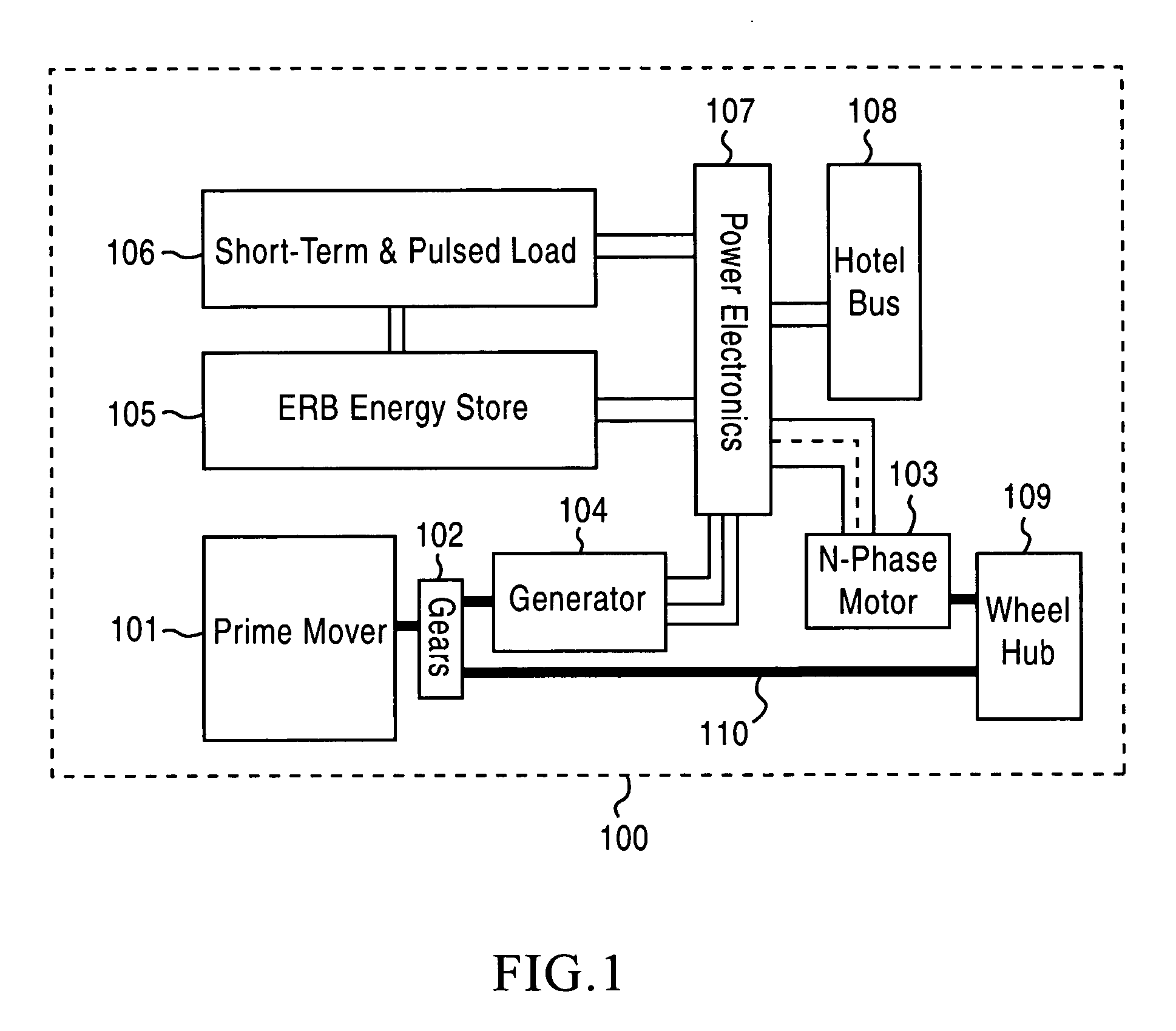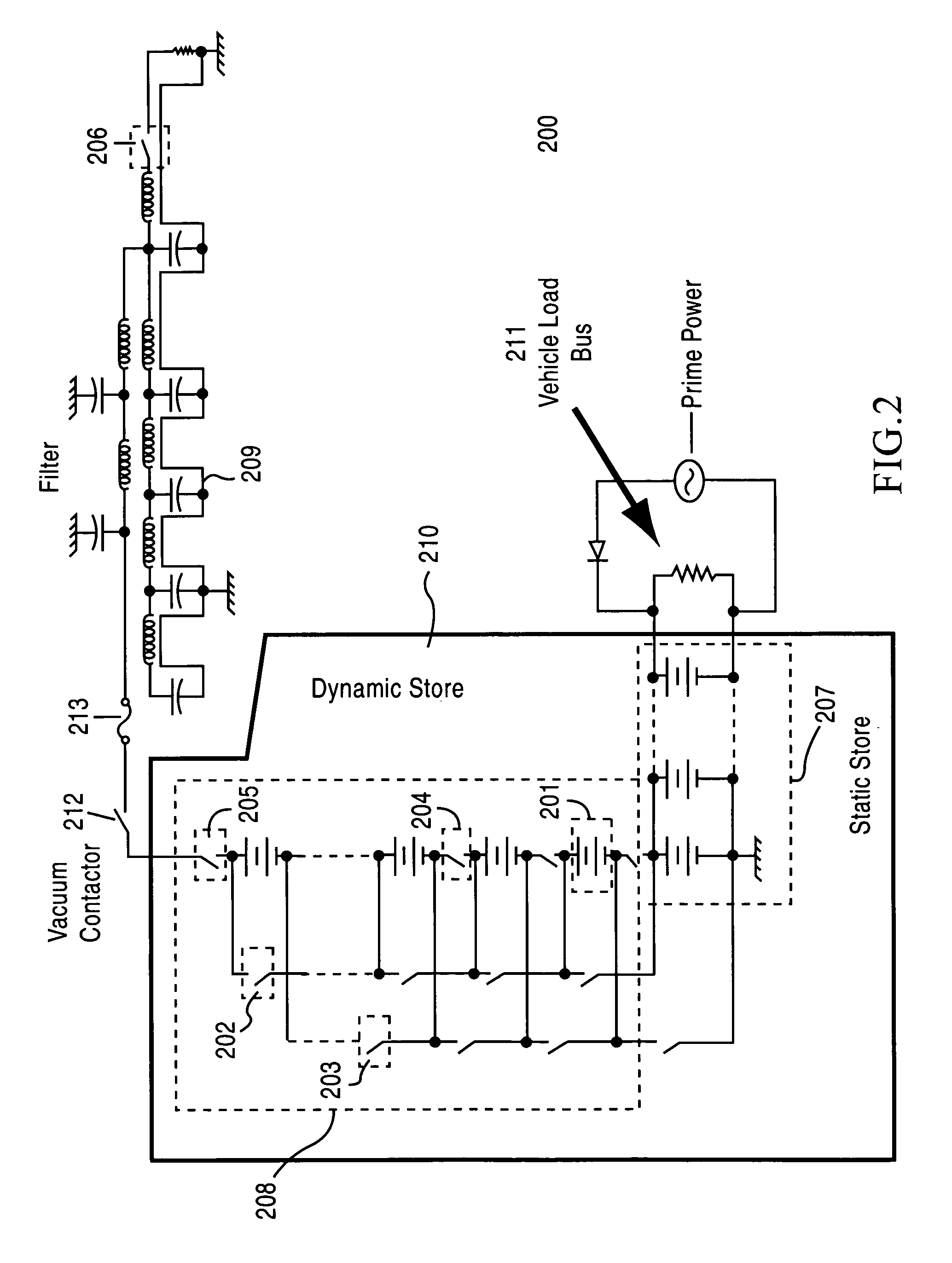Modular electronically reconfigurable battery system
a battery system and module technology, applied in the field of module electronic reconfigurable battery systems, can solve the problems of the most energy and power density of lithium-ion (li-ion) technology, and achieve the effect of simple scaling of more and easy configuration
- Summary
- Abstract
- Description
- Claims
- Application Information
AI Technical Summary
Benefits of technology
Problems solved by technology
Method used
Image
Examples
example
[0058] Assuming a 20-ton class vehicle and extrapolating from CHPS requirements, a conceptual design of an ERB for a hybrid electric vehicle with an EMA system has the following requirements: 1) Deliver up to 400 kW to the vehicle bus at 1 kV in parallel operation; 2) Recharge a 150-kJ capacitive store to 10 kV in 300 milliseconds; and 3) Support 30-45 minute silent operation at 80 kW. These requirements mandate the use of very high energy and power density batteries. Two candidate batteries are the HP series of lithium ion batteries being developed by SAFT and the lithium polymer batteries produced by Ultralife Batteries, Inc. for use in cell phones. The SAFT batteries have a slight advantage in usable power density and packaging for military use, whereas the Ultralife batteries have an advantage in cost (0.15-0.2 cents / J, 5-8 cents / Wpk, owing to volume production) and a potential for more compact packaging (prismatic) in ERB service.
[0059] The ERB system in this case constitutes ...
PUM
 Login to View More
Login to View More Abstract
Description
Claims
Application Information
 Login to View More
Login to View More - R&D
- Intellectual Property
- Life Sciences
- Materials
- Tech Scout
- Unparalleled Data Quality
- Higher Quality Content
- 60% Fewer Hallucinations
Browse by: Latest US Patents, China's latest patents, Technical Efficacy Thesaurus, Application Domain, Technology Topic, Popular Technical Reports.
© 2025 PatSnap. All rights reserved.Legal|Privacy policy|Modern Slavery Act Transparency Statement|Sitemap|About US| Contact US: help@patsnap.com



